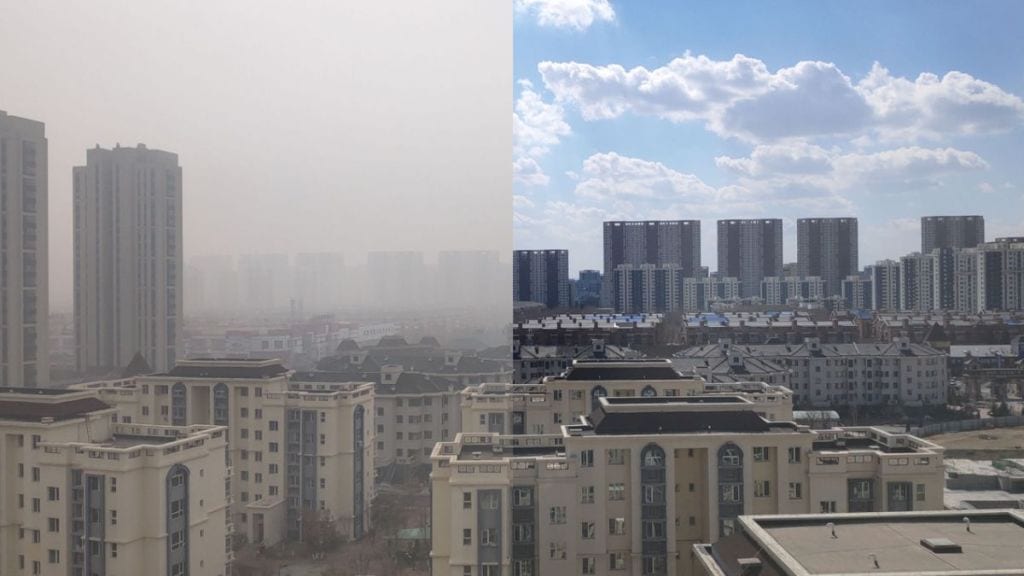Enveloped in a thick layer of smog, Delhi is struggling to breathe, with its air quality deteriorating to the ‘very poor’ category. There is literally no escape from the situation as working professionals and school children head outside every day, hoping for things to get better miraculously. According to official data, things are expected to remain like this for the next 5-6 days. Not just Delhi, several cities and towns across North India are recording similar levels of air pollution.
While people in Delhi are feeling hopeless in this situation, a decade back, Beijing offered a remarkable story of turnaround. In 2015, the Chinese capital’s skies were no better than Delhi’s and its average AQI was 144, comparable to Delhi’s current pollution levels. Yet by 2023, Beijing had slashed its pollution levels by nearly one-third, a major environmental reform.
How Beijing transformed its air quality
According to A Review of Air Pollution Control in Beijing, in 1998, the city was highly dependent on coal, and this, coupled with over one million vehicles in the city, led to a dangerous increase in total suspended particulate matter. Everything ran on coal, be it homes, factories, and even heating systems. The city burned nearly 28 million tonnes of coal a year, filling the air with soot. However, comprehensive air pollution programmes introduced in phases slowly brought change as the city began switching to cleaner energy like electricity and alternative fuels.
Old boilers were scrapped, homes were refitted, and within a decade, emissions of deadly pollutants like sulfur dioxide dropped by nearly 80%.
Walking, cycling, and cleaner fuels
Beijing faces a daunting challenge as the city is surrounded by mountains on three sides, due to which air pollution remains trapped, raising particulate matter levels. With a boom in construction, industries, and a massive number of vehicles on the road, along with a growing population, the pollution problem escalated, posing a huge public health challenge.
The pollution control programme in China addressed this issue by phasing out old, polluting vehicles, making cleaner fuels mandatory, and promoting non-motorised transport like bicycles. Besides, public transport got a massive upgrade, and from just 2 metro lines before 2000, it was expanded to 18 by 2013.
The city also transformed public transport that focused on light rails, walking and cycling. The share of public transport increased from 26 per cent in 2000 to 46 per cent by the end of 2013.
Air quality monitoring stations
Beijing set up 35 air quality monitoring stations, all linked to real-time data available to the public. People could check pollution levels before stepping out.
The results of all these efforts were stunning. By 2017, Beijing’s PM2.5 levels, the most dangerous fine particles, had dropped by 35%, and “blue sky days” became common again.


